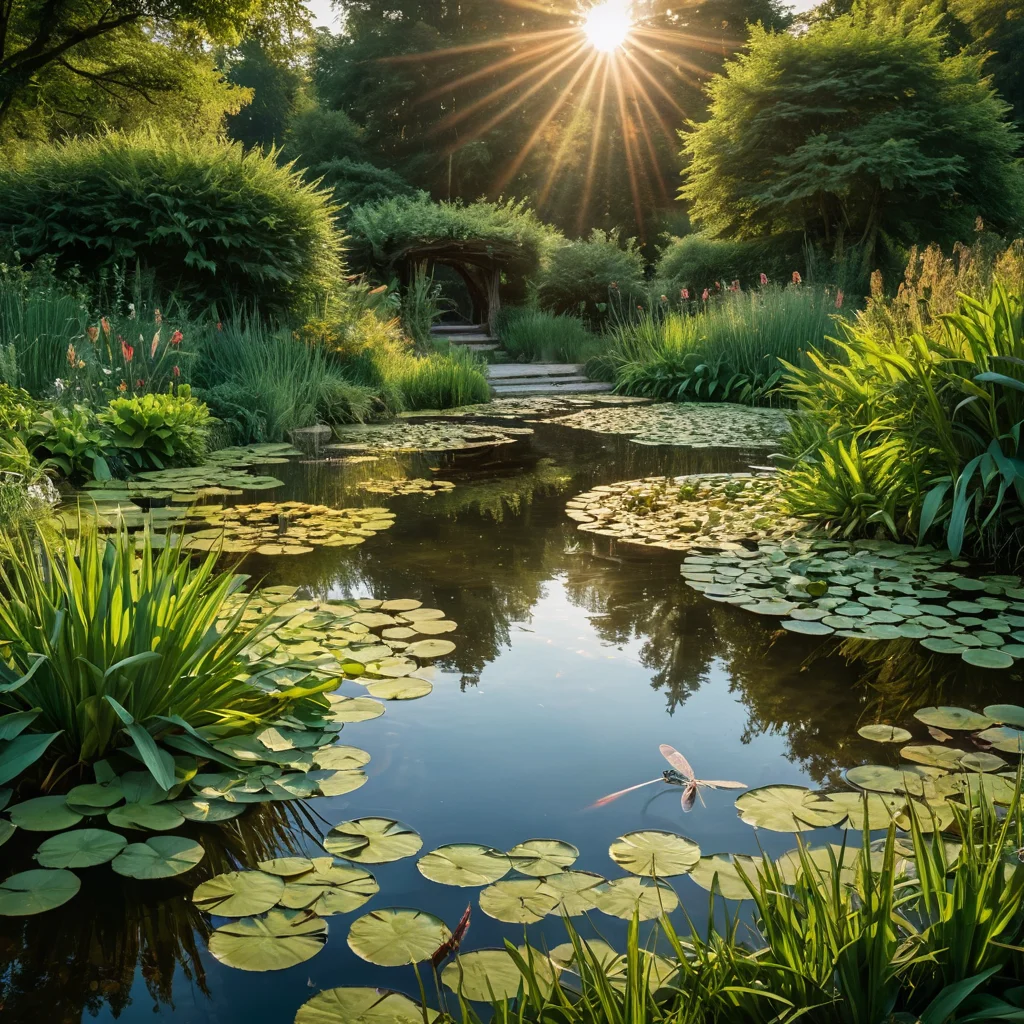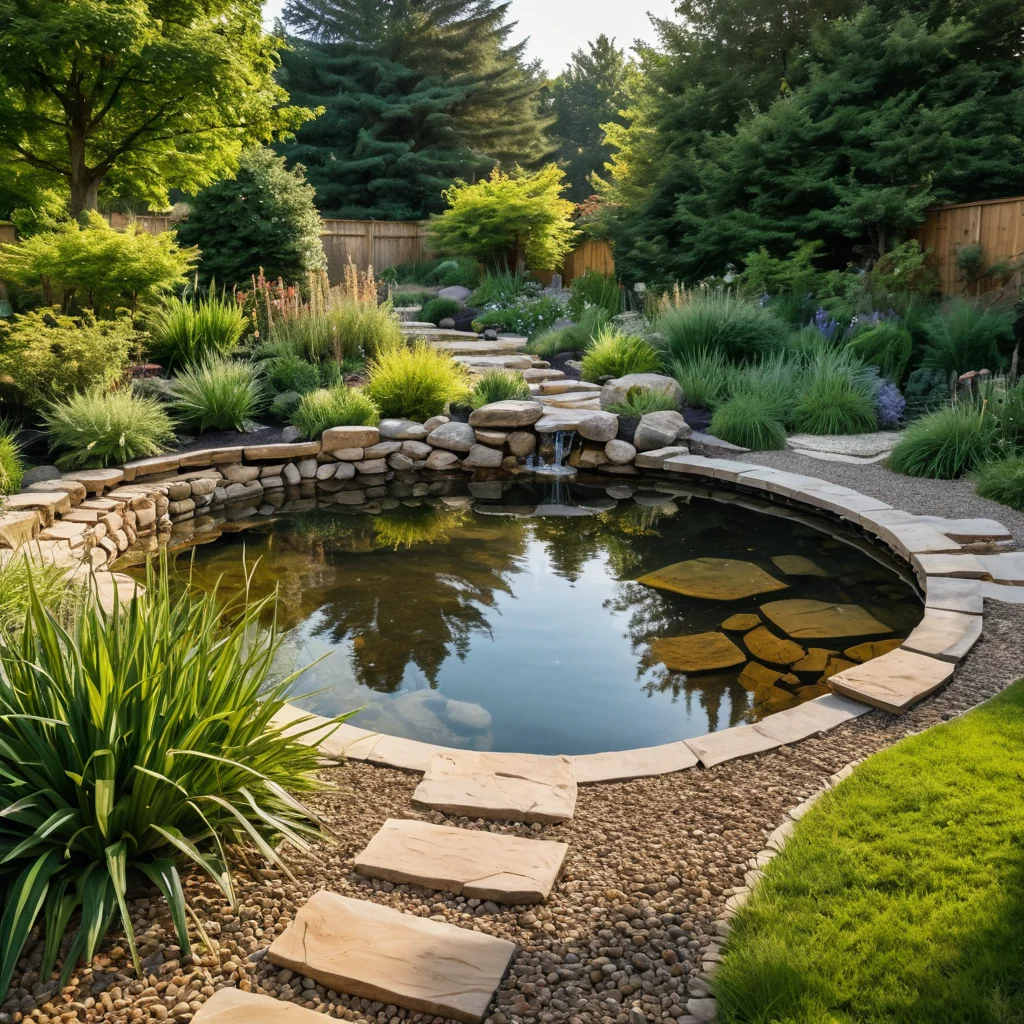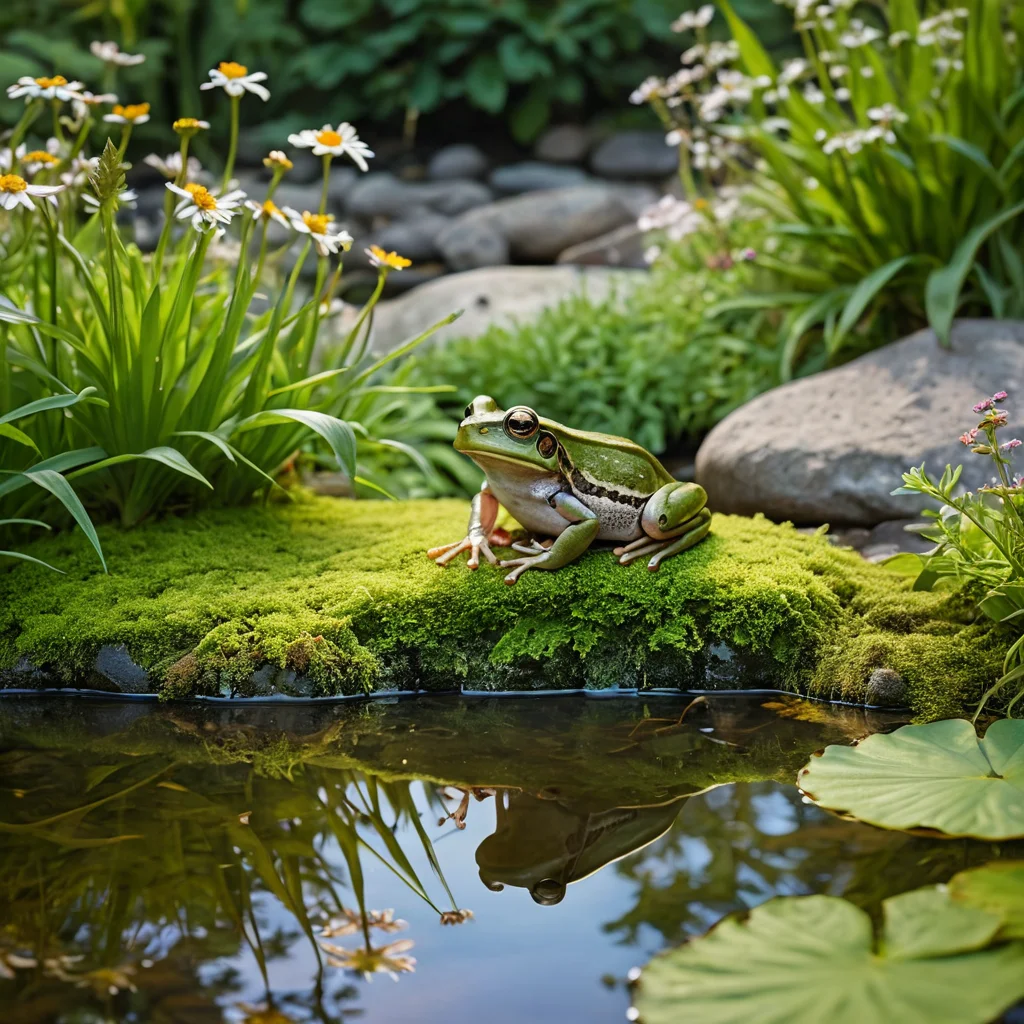Imagine: a quiet summer evening. The sun slowly sets below the horizon, painting the sky in warm tones. The air is filled with the scents of flowers and freshly cut grass. And then, from seemingly nowhere, a quiet, soothing croak is heard. These are not just the sounds of nature; they are the song of your own little water world – your “frog” pond. This corner of life, created by your own hands, can become not only a decoration for your property but also a true source of joy and harmony, a place where time slows down, and the hustle and bustle of everyday life fades away.
What is a “frog” pond and why do you need one on your property?
A “frog” pond is essentially a small, shallow body of water created specifically to attract and support amphibian life, such as frogs and newts, as well as other small aquatic inhabitants – insects, dragonflies, tadpoles. Unlike traditional ponds with fish and complex filtration systems, a “frog” pond is as close to natural conditions as possible and requires minimal care. Its main purpose is to become a natural, living decoration for your garden, its little heart beating in rhythm with nature.
So, why would you need such a pond on your dacha plot? There are many reasons, and each has its own special charm:
- Aesthetics and Harmony: A small body of water with lush greenery along its banks always looks picturesque. It brings a sense of coolness and freshness, making the landscape more complete and serene. It’s an ideal solution for creating cozy relaxation spots.
- Attracting Beneficial Inhabitants: Frogs are true helpers for gardeners. They feed on harmful insects – slugs, mosquitoes, caterpillars. By creating comfortable conditions for them, you get natural protection for your harvest without using chemicals.
- Educational Center for Children: Observing tadpoles, frogs, and dragonflies is a fascinating activity for children. Such a pond can become a real living laboratory, instilling in youngsters a love for nature and an understanding of its laws.
- Biodiversity: Every small body of water is an entire ecosystem. It supports the life of numerous insects, birds, and small animals, enriching the flora and fauna of your property.
- Ease of Maintenance: Compared to decorative ponds with fish, a “frog” pond requires minimal maintenance. You won’t need complex filters or pumps.
- Creating a Unique Landscape: A “frog” pond is not just water; it’s an entire composition of plants, stones, and driftwood that can become the highlight of your garden, reflecting your individuality and creative approach to gardening.
Believe my experience, even the smallest “frog” pond can transform a property, making it more alive and interesting. It’s a little miracle that you can create yourself.
Advantages of a “Frog” Pond: Beauty, Benefit to Nature, and Easy Care

Many people think that creating a pond on their property is a complex and expensive process. But a “frog” pond shatters this stereotype! Its main advantages lie precisely in the combination of aesthetic appeal, real benefits, and simplicity of implementation.
Let’s break them down in more detail:
- Natural Beauty and Picturesqueness: The “frog” pond itself is a beautiful decorative element. It enlivens the space, creates a sense of depth and coolness. The play of light on the water, the reflection of the sky and greenery, the splashing – all this creates a unique atmosphere of tranquility. It looks especially striking surrounded by flowering plants and stones.
- Ecological Benefits: As I’ve already mentioned, frogs are your little allies in the fight for a healthy garden. They actively destroy pests that we dislike seeing in our beds and on our flowers. By attracting frogs, you create a natural balance, promoting healthy plant growth. Furthermore, such ponds become home to numerous beneficial insects that participate in pollination and support the ecosystem.
- Minimal Costs for Creation and Maintenance: A “frog” pond often doesn’t require expensive materials or complex equipment. It can be made from readily available materials, and its life support system is nature itself. Filtration occurs naturally thanks to plants and microorganisms. You won’t have to spend time and money on pumps, compressors, and chemicals.
- Year-Round Appeal: A “frog” pond is beautiful in any season. In spring, it comes alive with nature; in summer, it delights with lush greenery and the croaking of its inhabitants; in autumn, it’s covered with picturesque leaves; and in winter, it can transform into a sparkling ice pattern.
- Opportunity for Creativity: The shape, size, and design of the banks – all this offers scope for your imagination. You can create a pond in the style of a Japanese garden, rustic, or simply make it as natural as possible, integrating it into the existing landscape.
- Educational Aspect: For families with children, a “frog” pond is an invaluable opportunity to get acquainted with the world of nature. Observing the development of tadpoles, the life of insects, and how frogs build their homes is much more interesting than any cartoon.
I always advise my acquaintances who want to add something special to their property but are not ready for big expenses and complexities to consider a “frog” pond. It’s truly one of the most successful and rewarding solutions.
Choosing a Location for a “Frog” Pond: Lighting, Terrain, and Safety

The right choice of location is already half the success in creating your “frog” pond. The comfort of its future inhabitants, how easy it will be for you to maintain it, and how harmoniously it will fit into the overall landscape of your property all depend on where the pond is situated.
Here’s what to pay attention to:
- Lighting: This is perhaps one of the most important factors. A location that is illuminated by the sun for 4-6 hours a day is considered ideal. Direct, scorching sunlight all day can lead to overheating of the water, rapid algae growth, and the death of aquatic plants. A too-shady spot, on the other hand, can slow down plant growth and make the pond look gloomy. Look for a happy medium – light partial shade or a spot where the sun shines in the morning or closer to evening.
- Terrain: It’s best to choose a relatively flat area for a “frog” pond. A slight slope can even be beneficial, as it can help organize a natural overflow or create an area for planting moisture-loving plants. However, avoid low-lying areas where rainwater can accumulate, leading to stagnation and poor water quality.
- Proximity to Trees: Try not to place the pond too close to trees, especially large ones. Falling leaves and branches will pollute the water, clog the bottom, and make maintenance difficult. Tree roots can damage the pond’s waterproofing. If you really want to place the pond near trees, choose those that don’t shed excessively and be prepared for more frequent cleaning.
- Visibility and Accessibility: Choose a spot from which your pond will be clearly visible. After all, it’s a decoration for your property! Also, ensure that there is convenient access for maintenance: adding soil, removing leaves, planting.
- Safety: Consider safety, especially if there are children or pets on the property. A “frog” pond is shallow, but it’s still worth taking precautions. You might want to place it further away from play areas or consider fencing.
- Quietness and Seclusion: Frogs are shy creatures. They need a certain degree of seclusion. Therefore, choose a place where they won’t be constantly disturbed. This will also create a more pleasant atmosphere for your relaxation.
- Proximity to a Water Source: Although a “frog” pond doesn’t require constant refilling, being close to a tap or hose will make it easier to top up the water during hot weather.
Personally, I prefer to place my “frog” ponds in open, but not overly sunny clearings, where they are well-visible from the relaxation area, but at the same time feel secluded. Such a balance is the key to success!
Materials for a “Frog” Pond: Film, Concrete, or a Ready-Made Form?

